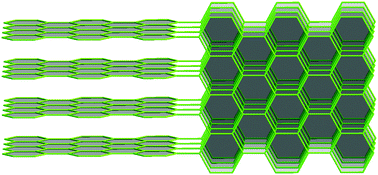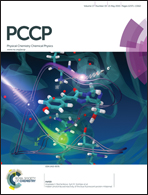Three-dimensional sp2-hybridized carbons consisting of orthogonal nanoribbons of graphene and net C
Abstract
We identify two sp2 hybridized network models of carbon, namely GT-8 and CT-12, based on first-principles calculation results. Parallel nanoribbon rows of graphene and net C are found to be interlinked with orthogonal nanoribbons to construct GT-8 and CT-12, and their series of isomorphic analogs (named GTs and CTs) are assembled with the widening of the nanoribbon components. GTs and CTs are dynamically and mechanically stable and energetically more favorable than many previous sp2 carbons, including K4, C20, and H6 carbon. They are two-dimensional conductors with insulating properties along the z-axis. Remarkably, GTs are superconductive with increased superconducting transition temperatures, Tc, as the nanoribbons widen. The Tcs of GT-8 and GT-16 are 5.2 and 14.0 K respectively, which are higher than that of boron-doped diamond under the same value of Coulomb pseudopotential μ*. They possess higher bulk moduli than graphite and behave as excellent ductile materials. The Young's modulus of GT-8 along the z-axis is comparable with that of graphene and it significantly increases as the nanoribbons widen.


 Please wait while we load your content...
Please wait while we load your content...